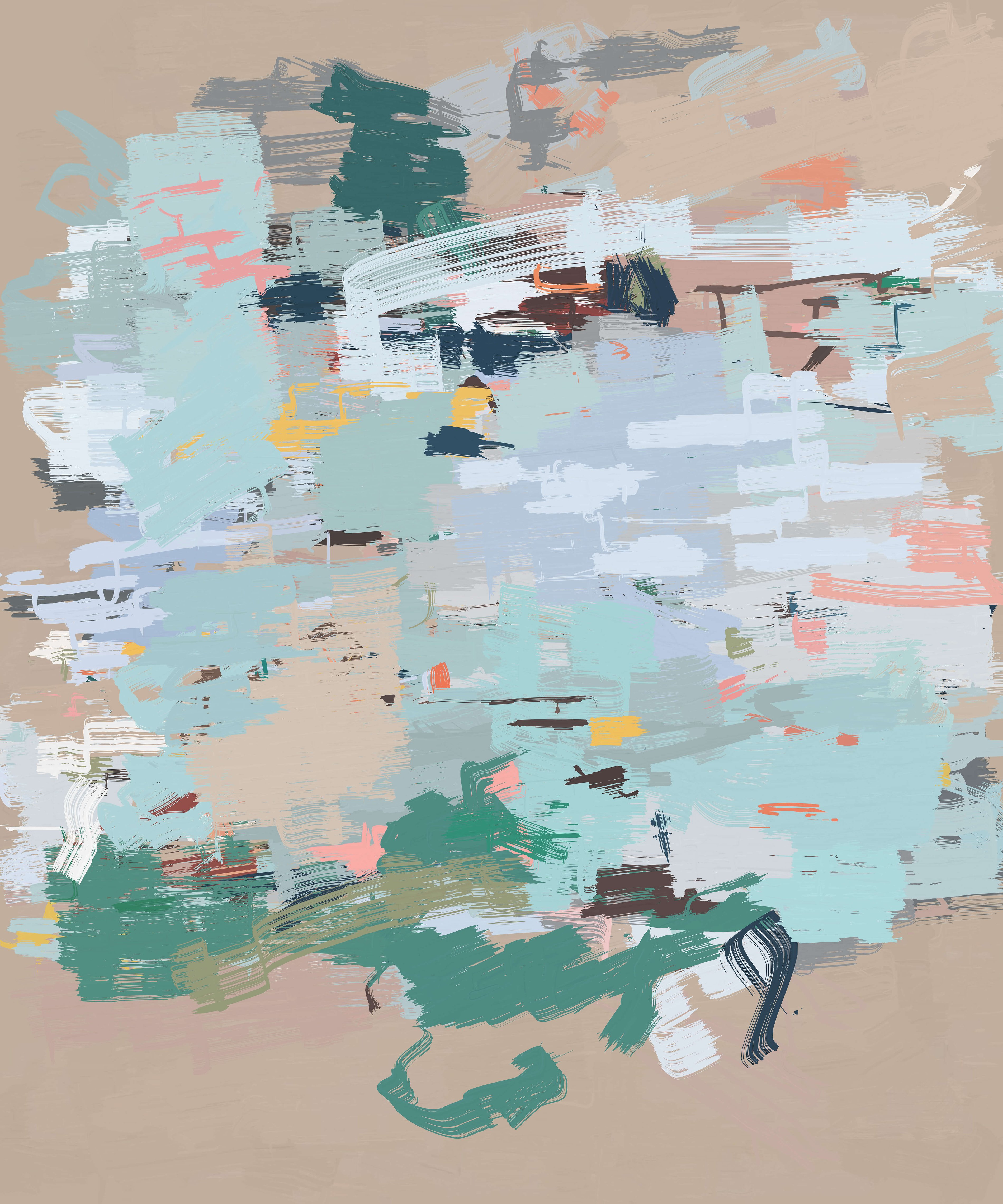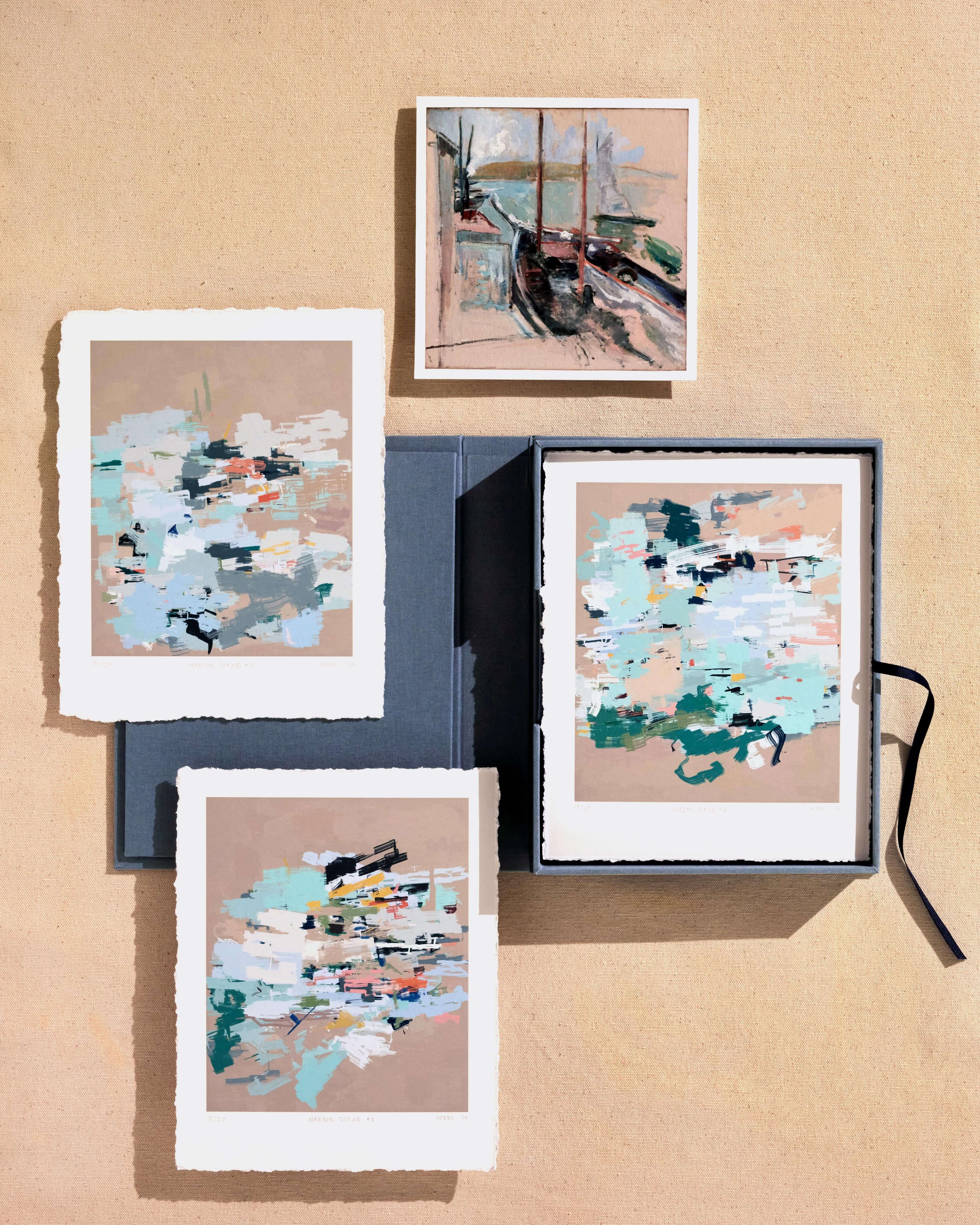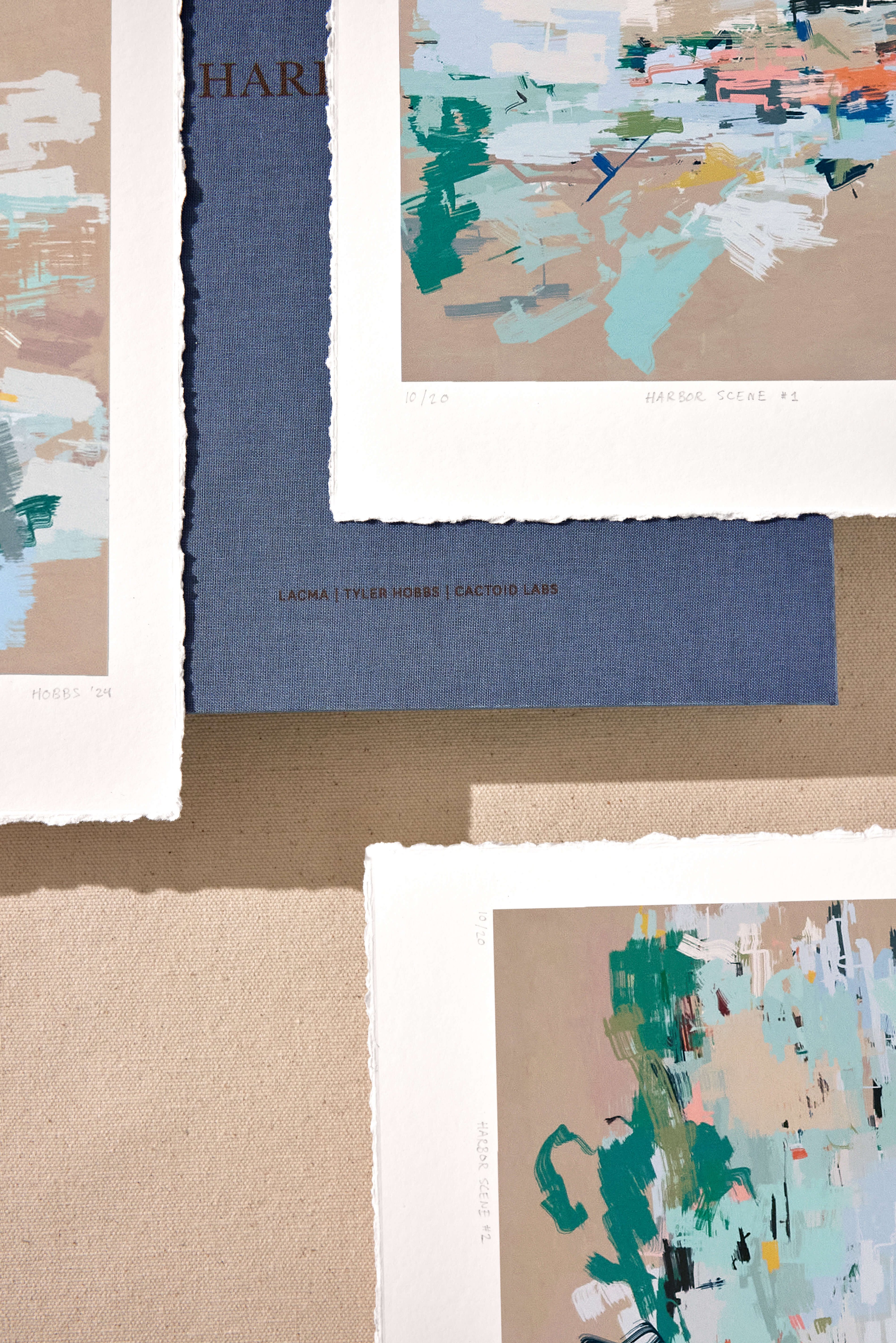Harbor Scene

Harbor Scene is an unfinished painting by John Henry Twachtman in the collection of the Los Angeles County Museum of Art, created around the year 1900. Twachtman was an American painter. He focused primarily on landscapes, and waterfront scenes were a recurring theme in his work.

John Henry Twachtman, Harbor Scene, circa 1900
What immediately attracted me to this work was the complex negative space, and the loose, gestural mark-making employed by Twachtman. Both of these are undoubtedly due to the fact that the painting was unfinished, and left in its early stages. An artist can so easily overwork a piece. The fact that it was stopped short preserves a type of freshness that was rare in 1900, especially in the American painting scene.

Details from Harbor Scene by John Henry Twachtman

That type of gestural freedom, and variety in mark-making styles, is something that has captivated me for years. It comes quite naturally when painting, but it’s completely the opposite of what comes naturally when working with an algorithm. And yet, I wonder: is there something systematic there that can be examined through the lens of the algorithm? Could I arrive at a similar level of freedom and surprise? This is an issue that I’ve been gnawing on for some time, particularly since I became familiar with the works of Joan Mitchell, who had a hand that captured this quality as well as any other artist I’ve seen.

Joan Mitchell, Untitled, 1992
In 2023, I was presented with the opportunity to create a new work inspired by the collection at LACMA. While browsing the collection, I came across Harbor Scene, and it immediately clicked into place with these gestural ideas I had been contemplating. I decided to take the spirit of Twachtman’s painting and try to abstract and expand it, systematically. Could I preserve that sense of freedom and looseness and still arrive at entirely new compositions? Without control over the precise placement of elements, would the sensations of the harbor environment persist? And how would the computer, with its particular strengths and weaknesses, skew the outcome towards something entirely new?
Could I preserve that sense of freedom and looseness and still arrive at entirely new compositions?
I dug in and began to craft an algorithm. Some of the bones of this approach were formed long ago, in 2015, as I was just acquainting myself with the generative approach to artmaking. Other components came from more recent sketches — ideas about graffiti, and ideas about the motion of the hand, arm, and body. I quickly found myself with a powerful algorithm that was generating a wide range of outputs. Even early on, I could see special moments happening and knew that a smart curatorial strategy could extract something fascinating.

A detail from Harbor Scene #2 (after John Henry Twachtman)
Early in the algorithm’s development, I frequently referenced the original Harbor Scene painting. It was important to use colors from that work, and to take inspiration from the unique gestural qualities. As I progressed with the algorithm, I chose to view the original painting less and less. I also wasn’t aiming to reproduce that work. I wasn’t aiming to make a fake painting. I had pulled all of my starting ingredients from it, but it was important to relax that relationship, and allow the new work to take on a life of its own. I began to furnish and craft it with the components I am perennially obsessed with: uniquely digital artifacts, strong pops of color, and immediate abstract digestibility. It became my own.
Even after departing from that narrow vision of Harbor Scene, it was important to me to retain something special from the original, like the sense of the water, the air, and the clutter of energy that you always find at a boat harbor. When I was a boy, my father owned a small sailboat for several years. I’ve felt exactly the sensation that Twachtman must have felt when he first viewed that scene. I wanted to preserve (or even enhance) that feeling, even if it came through in a more abstract way. As I curated hundreds of outputs from the algorithm to select the final three, this was a constant goal.

Hobbs family sailboat
In my final selection of three outputs, I also felt it was important to capture a range of what the algorithm could produce. The raw output set spanned a range from chaotic to placid, vibrant to muted, full to sparse, and everything in between. These three selections found unique moments, and each stands along well. But taken together, these three capture my full sense of what Harbor Scene meant.

Harbor Scene #1 (after John Henry Twachtman), 2024

Harbor Scene #2 (after John Henry Twachtman), 2024

Harbor Scene #3 (after John Henry Twachtman), 2024
The Commemorative Folio
In addition to the three NFTs, a limited edition set of 20 commemorative folios were created that showcase prints of the Harbor Scene works, the painting by John Henry Twachtman, the algorithm's source code, an essay and quote, the photograph of the family sailboat, a Certificate of Authenticity, and an NCF chip for on-chain registration. Together, these act as an intimate keepsake of inspiration and memories.







